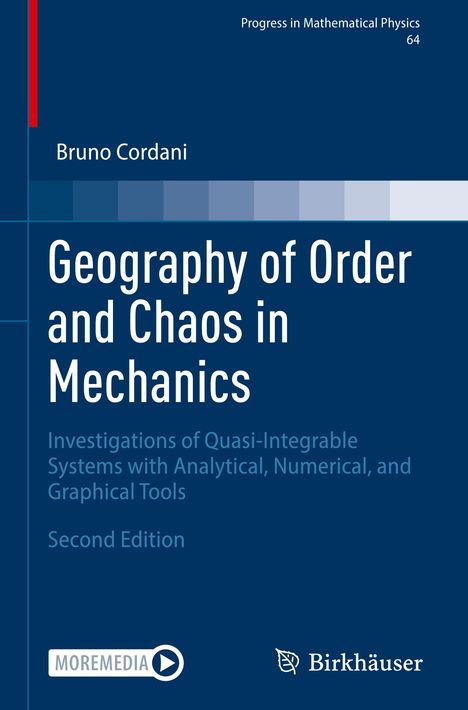Bruno Cordani: Geography of Order and Chaos in Mechanics, Gebunden
Geography of Order and Chaos in Mechanics
- Investigations of Quasi-Integrable Systems with Analytical, Numerical, and Graphical Tools
(soweit verfügbar beim Lieferanten)
- Verlag:
- Springer Nature Switzerland, 09/2024
- Einband:
- Gebunden, HC runder Rücken kaschiert
- Sprache:
- Englisch
- ISBN-13:
- 9783031722257
- Artikelnummer:
- 11958681
- Umfang:
- 424 Seiten
- Nummer der Auflage:
- 24002
- Ausgabe:
- Second Edition 2024
- Gewicht:
- 876 g
- Maße:
- 241 x 160 mm
- Stärke:
- 27 mm
- Erscheinungstermin:
- 5.9.2024
- Hinweis
-
Achtung: Artikel ist nicht in deutscher Sprache!
Weitere Ausgaben von Geography of Order and Chaos in Mechanics |
Preis |
|---|
Klappentext
This monograph explores the dynamics in the particular but very important and significant case of quasi-integrable Hamiltonian systems, or integrable systems slightly perturbed by other forces. With both analytic and numerical methods, the book studies several of these systems - such as the hydrogen atom and the solar system, with the associated Arnold web - through modern tools such as the frequency-modified Fourier transform, wavelets, and the frequency-modulation indicator. Meanwhile, it draws heavily on the more standard KAM and Nekhoroshev theorems.
Geography of Order and Chaos in Mechanics contains many figures that illuminate its concepts in novel ways, but perhaps its most useful feature is its inclusion of software to reproduce the various numerical experiments. The graphical user interfaces of five supplied MATLAB programs allows readers without any knowledge of computer programming to visualize and experiment with the distribution of order, chaos and resonances in various Hamiltonian systems.
This monograph will be a valuable resource for professional researchers and certain advanced undergraduate students in mathematics and physics, as well as an exceptional reference for PhD students with an interest in perturbation theory.
The Second Edition includes a new chapter on theoretical and numerical results in the study of the solar system's (in)stability obtained since publication of the First Edition, clarifying the topological mechanism that causes the sudden increase in Mercury's eccentricity. An updated version of the companion software is also provided, which contains new features and better Graphical User Interfaces. Thanks to the compiled versions, all the software can be used even if the user does not have access to a MATLAB installation.


